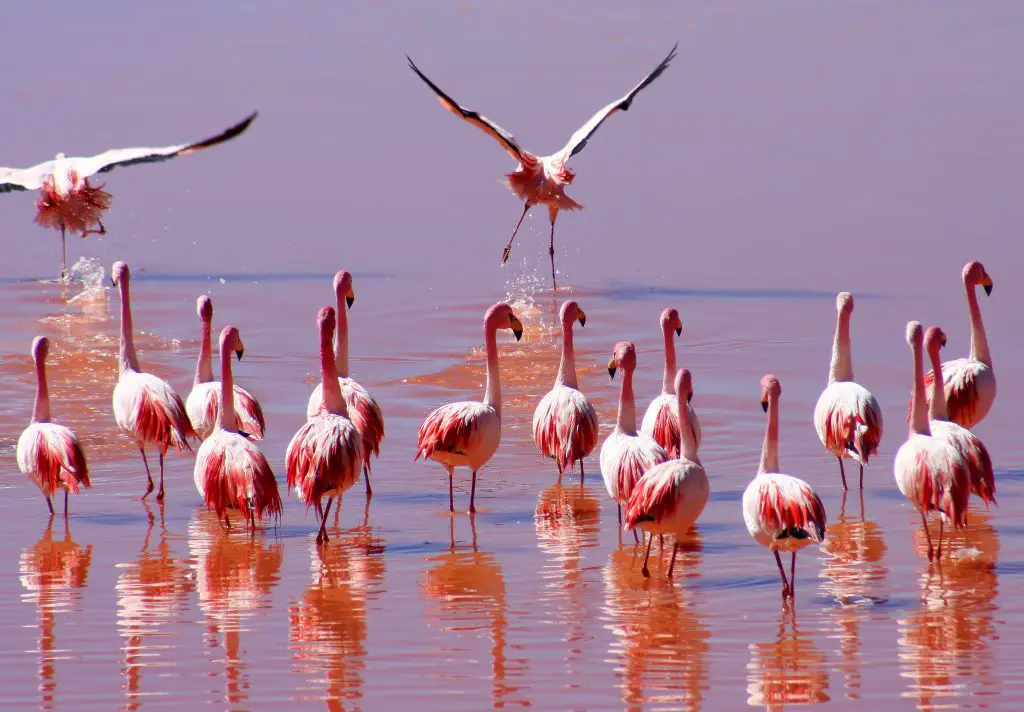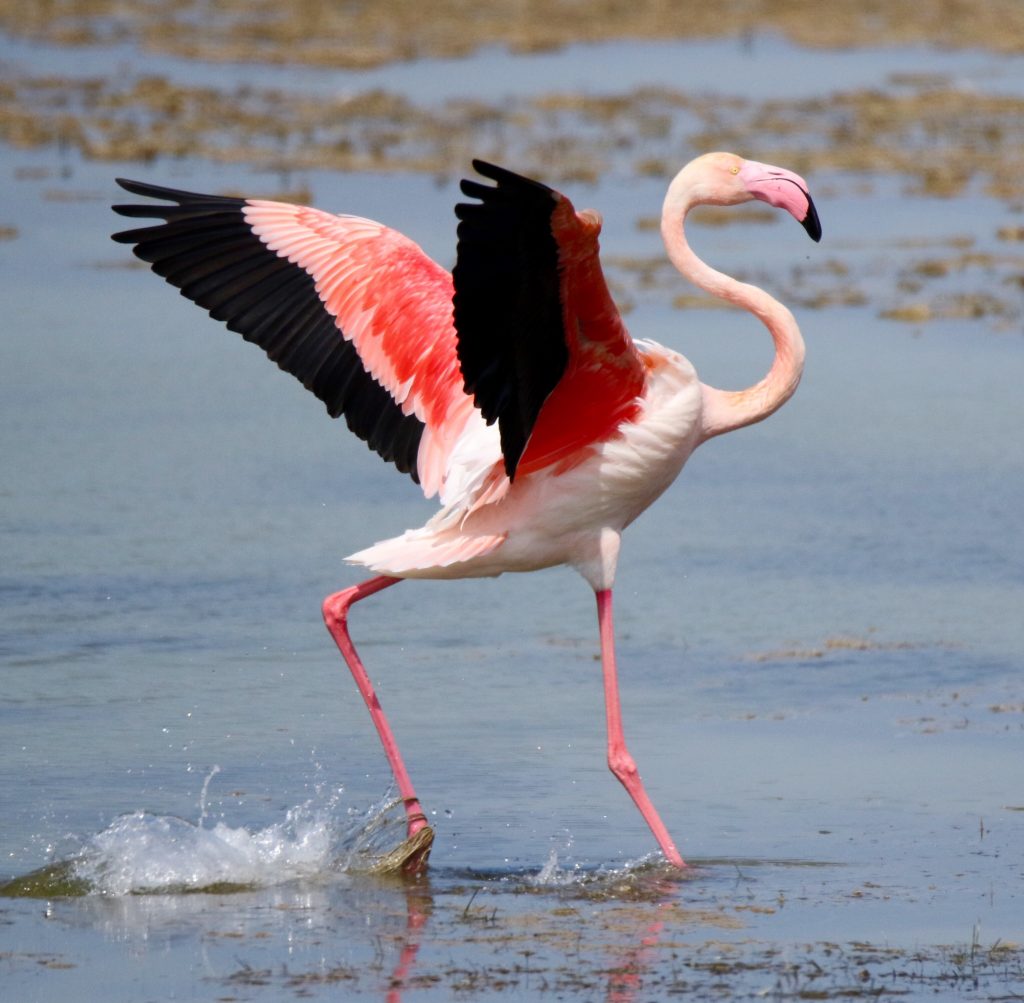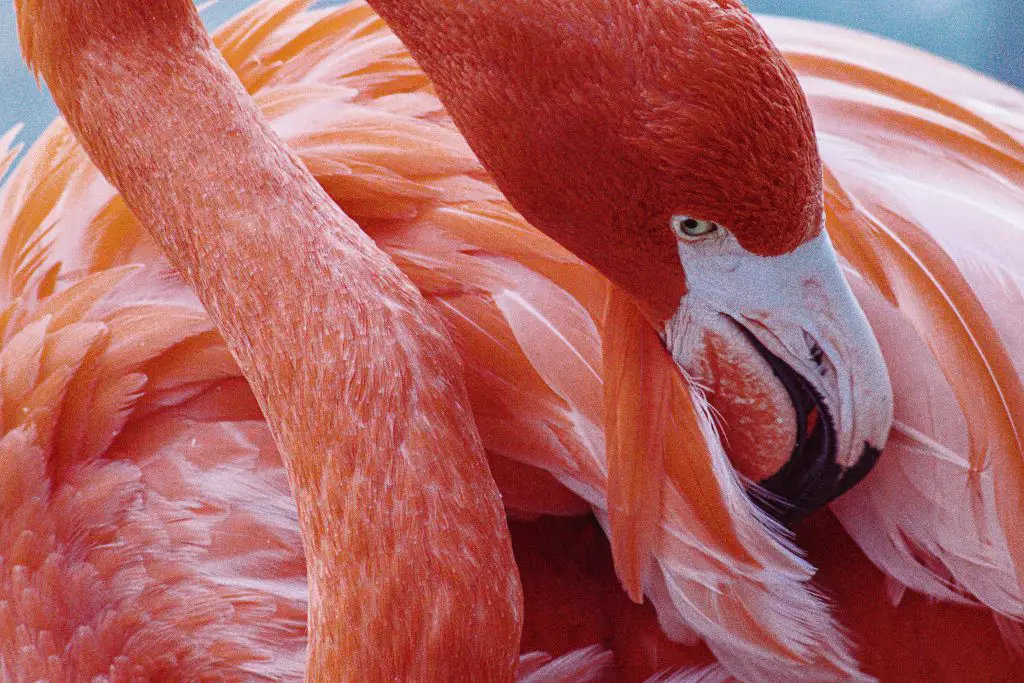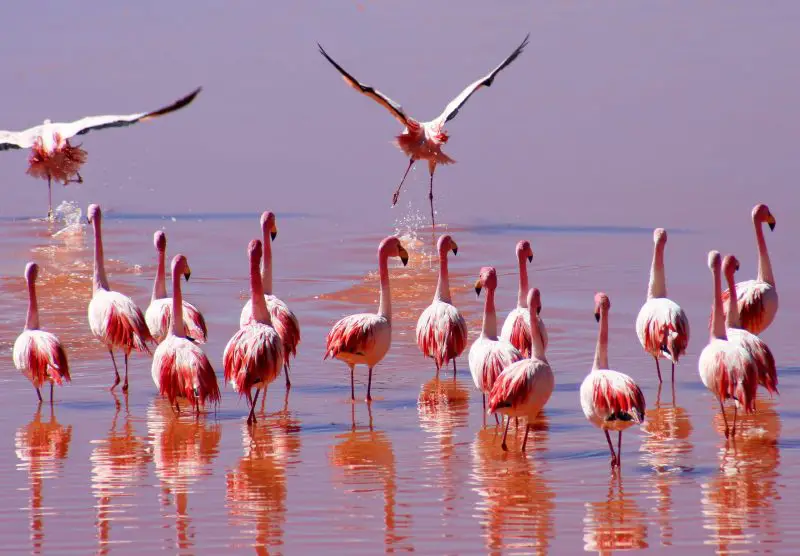Yes, flamingos can fly. In fact, unlike many other birds that spend the majority of their time on the ground, flamingos are known to soar at extremely high altitudes and over great distances, which makes them an excellent hunting partner.
Flamingos may fly as far as 375 miles in a single night, going at an average speed of 35 miles per hour and reaching heights of up to 15,000 feet above the ground.
In the universe of wading birds, flamingos are a group of birds that can be found all over the globe. They can be found in the Americas, the Caribbean, Africa, Asia, and even Europe. In reference to its beautiful pink and usually red hue, the name “flamingo” is derived from an Old Portuguese word that basically means “flame-colored”.
Although all species have the ability to fly, not all species fly very frequently. In terms of flamingos, the Greater Flamingo is one of the most frequent fliers among all species. The reason for this is that a greater proportion of their population migrates.

Why Don’t Flamingos Fly At the Zoo?
Many zoos clip the feathers of flamingos in order to keep them from flying away and escaping from their enclosures, which may be dangerous. Flying is impossible for a bird if it does not have feathers, and removing one or two feathers makes it very difficult for the bird to take off.
During this surgery, the bird’s wing bone is surgically removed, making the bird unable to fly in the future. Obviously, this is a painful procedure that causes the bird considerable distress. The majority of the time, the feathers grow back, and the cutting operation must be repeated.
Flamingos may be kept in captivity by enclosing them in a huge net box or a netted compartment, which prevents them from escaping from the enclosure. This prevents the bird from being able to fly away from it and forces it to remain below it while zoo staff provides it with food and other supplies.

Can Flamingos Fly Out of A Zoo?
Flamingos don’t usually fly out of zoos. The food provided by the zoos is excellent for the flamingos. Because there is an ongoing struggle for survival and flourishing in the outdoors, these birds consume everything they can find and are often deficient in essential nourishment.
In zoos, flamingos may live up to 45 to 50 years, although in the wild, they only survive 20 to 25 years on average. This obviously shows that zoos and other animal facilities provide these birds with a greater chance of surviving than the challenging circumstances in the wild.
Can Flamingos Fly High? How High?
Flamingos can fly quite high. They love to fly in clear weather with strong tailwinds. They can travel 600 kilometers (373 miles) in one night at a speed of 50 to 60 kilometers per hour (31-37 mph).
Flamingos can fly between 10,000 and 15,000 feet, or 3 and 5 kilometers in the air, while they are in flight. During migration, however, several species have been detected on radars at heights of up to 15,000 feet (about 4,500 meters).
Large flocks of birds appear on radars, and the flocks of birds flying high have been recognized as flamingos. The flock was seen flying high over Bolivia on this occasion. Flamingos are thought to be able to fly so high because they don’t want to be eaten by other birds, like hawks.
This, however, is entirely dependent on the wind. When the wind blows directly in front of the flamingos, they prefer to fly lower, usually above the water’s surface, where the wind is lighter and the wind’s power is reduced. Flamingos migrating between France and the southern
The Mediterranean, for example, usually flies higher than 250 meters. This is due to the fact that they fly at lower altitudes, mainly over water. When flying over land, though, they may reach altitudes of more than 15,000 feet (5 kilometers).
Flamingo flight conditions, wind intensity, the direction in which they fly, and, of course, whether they’re flying over water or land, may all influence flamingo flight behavior.
Do Flamingos Fly In The Sky At Night?
In fact, unlike other birds that spend most of their time on the ground, flamingos can fly at very high altitudes and at extremely fast speeds across great distances. Flamingos can fly for up to 375 miles at an average speed of 35 miles per hour at night.
While flying at 15,000 feet above the earth, something may happen. Flamingos like to fly at night when the skies are clear and the winds are calm. They fly at high altitudes throughout the day to avoid being seen by predators. Flamingos are mostly found in tropical and subtropical environments.
Because of climate change and the loss of water in their nesting areas, flamingos have little choice but to move.

At What Age Do Flamingos Learn To Fly?
Flamingo chicks are born with grey or white feathers, and their flight feathers do not grow until they are roughly 11 weeks old. Flamingos look after their young during the first several months, and flying is not on the flamingos’ educational agenda at this time.
Young flamingos begin to fly for the first time at the age of 2-3 months. They haven’t acquired their pink color yet, so don’t be surprised if some of the flamingos in the overflying flock are still grey.
By the time they’re three weeks old, flamingo chicks will have left their nest and started hunting for food with groups of other chicks, putting the need for various survival skills into perspective. A flamingo chick will need a few more weeks to be able to fly correctly after they’ve begun learning the principles.

Do All Flamingo Species Fly?
All flamingo species have the ability to fly, and the distance and frequency with which they do so are determined more by their environment than by their species.
Some of the most frequent species known to migrate include the aforementioned Andean flamingo and a population of larger flamingos that periodically travel from their habitat in southern France to Tunisia and Turkey.
Members of both the larger and smaller flamingo species fly to western India. Although flamingo migrations have been occurring since the early 1980s, the number of flamingos arriving in Mumbai has been progressively increasing over the past few years.
Why Don’t We See Flying Flamingos More Often?
You may be wondering why we rarely see flamingos in the air but always see them on the ground. Due to the fact that they often fly at a high altitude, generally over 10,000 feet, their pink or red colors are not easily seen in the sky from such a great distance.
According to your location, there is a good chance you’ve looked straight at a flock of flying flamingos and failed to recognize them as such.
Why Do Flamingos Fly?
Despite the fact that flamingos are not true migratory birds, they do fly often. They’ll travel if the weather changes, the water level fluctuates, or their food supply becomes unavailable or insufficient.
These aren’t the typical migrations, despite the fact that they occur on a regular basis. Flocks of flamingos like shallow water and are not fond of it when it is too cold. They’ll also take to the air if they’re disturbed and feel threatened, but they’ll usually just fly a short distance, to the next lake or lagoon.
Can Quails Fly like Flamingos?
Quails are known for their ability to fly short distances but not as gracefully as flamingos. While the keyword quails swimming and flying distances implies that quails can swim, it is important to note that quails are primarily terrestrial birds. Unlike flamingos, quails do not possess the same adaptations for long-distance flights or specialized swimming abilities.
Do Flamingos Fly In Formations?
In order to fly long distances, flamingos create flocks that take on diverse shapes and fly close together. The classic V-formation is a frequent flying formation, but more irregular line and ball-like flight formations are also seen from time to time.
In order to take advantage of varied wind patterns, the flock’s flying arrangement will most likely need to be modified. When flying in a swarm, flamingos make loud honking noises that are similar to those made by geese.
Some people think that flamingos can communicate with one another about their whereabouts, possible dangers, and how to find their companions and parents by making calls and responding with sounds.
It seems as though the landing process for the flock and formation of flamingos is a disorderly, spectacular mess in which each individual just tries to find an appropriate landing site.









